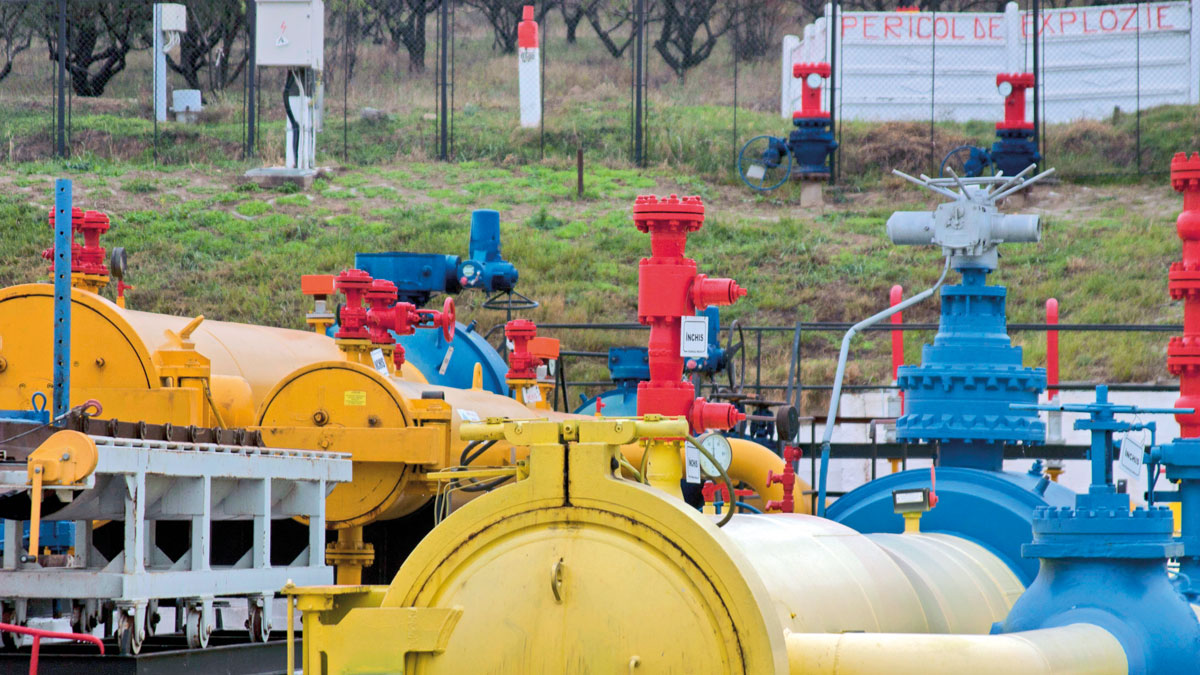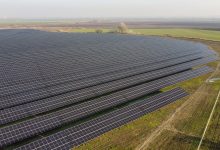EU 5th List of Projects of Common Interest
The European Commission approved the 5th list of Projects of Common Interest (PCIs) in the field of trans-European energy infrastructure. The list includes several projects in Romania – especially the second phase of the BRUA (Bulgaria – Romania – Hungary – Austria) pipeline project, and not only.
In the natural gas sector, among the projects involving Romania and which are included on the 5th list of projects of common interest are: Depomures Underground Gas Depot, Bilciuresti Underground Gas Depot and BRUA – Phase II.
This second stage of BRUA projects includes the expansion of transport capacity in Romania towards Hungary: ensuring the physical possibility of permanent bidirectional flow between Romania and Hungary, by building a compression station at Csanadpalota (Hungary).
The list also includes projects of the Romania – Serbia Cluster, also known as the ‘Mid Continental East Corridor’ and the CARMEN project.
Projects of common interest (PCIs) are key infrastructure projects aimed at completing the European internal energy market to help the EU achieve its energy and climate policy objectives: delivering affordable, secure, and sustainable energy for all Europeans and contributing to a climate-neutral economy by 2050.
The 5th PCI list
The 5th PCI list includes 98 projects: 67 electricity transmission and storage projects, 20 gas projects (listed previously in the fourth PCI list), six CO2 network projects and five smart grid projects.
The 5th PCI list reflects the evolving policy priorities related to meeting the EU’s climate neutrality goals and the clean energy transition: it does not contain any new gas infrastructure projects, nor any oil projects and, thus, firmly shifts the priority to infrastructure most supportive of the EU’s decarbonisation aims.
Regarding electricity, the projects have been selected with the aim to fill the remaining infrastructure gaps and allow for a smooth transition towards climate neutrality. The lower number compared to the 100 projects included on the fourth PCI list can be explained by the completion (or near completion) of 14 interconnection projects and by the change in status of the UK from a Member State to a third country, which led to the ineligibility of 12 projects which had been on the fourth list.
Electricity interconnections are key to achieving the 2030 targets and the climate-neutrality objective at the least cost for society. The Commission put an even stronger focus on electricity transmission in the proposal for a revised TEN-E Regulation, notably through dedicated provisions that would allow for an ambitious scale-up of offshore grids across sea-basins in Europe.
The number of gas PCIs is reduced from 32 projects in the previous list to 20. These projects are necessary to ensure security of supply for all Member States. Once these advanced projects are completed, there is no longer needing to support gas projects with PCI status. This underlines the robustness and resilience of the existing EU gas grid, as well as the EU’s resolve to phase out support for fossil fuel infrastructure. The low number of gas projects on the list is also the result of the strengthened sustainability assessment applied to candidate PCIs in gas.
The list includes five smart grid projects and six CO2 network projects. Their relative importance as a share of all projects on the PCI list is expected to grow and these projects are expected to play an increasing role in the future.
Priority Corridor Northern Seas Offshore Grid (NSOG)
- Ireland interconnection between La Martyre (FR) and Great Island or Knockraha (IE) (Celtic Interconnector)
- One or more hubs in the North Sea with interconnectors to bordering North Sea countries (Denmark, Germany, Netherlands) (North Sea Wind Power Hub)
- Green Hydrogen Hub Compressed Air Storage (DK)
Priority Corridor North-South Electricity Interconnections in Western Europe (NSI West Electricity)
- Interconnection between Codrongianos (IT), Lucciana (Corsica, FR) and Suvereto (IT) (SACOI 3)
- Interconnection between Aquitaine (FR) and the Basque country (ES) (Biscay Gulf)
- Internal line between Osterath and Philippsburg (DE) to increase capacity at western borders (Ultranet)
- Internal line between Brunsbüttel/Wilster and Grοβgartach/ Bergrheinfeld-West (DE) to increase capacity at northern and southern borders (Suedlink)
- Interconnection between Thusis/Sils (CH) and Verderio Inferiore (IT) (Greenconnector)
- Cluster of internal lines in Portugal
- Portugal — Spain interconnection between Beariz — Fontefría (ES), Fontefria (ES) — Ponte de Lima (PT) (formerly Vila Fria/Viana do Castelo) and Ponte de Lima — Vila Nova de Famalicão (PT) (formerly Vila do Conde) (PT), including substations in Beariz (ES), Fontefría (ES) and Ponte de Lima (PT)
- Capacity increase of hydro-pumped electricity storage in Kaunertal, Tyrol (AT)
- Internal lines at the Belgian north border between Zandvliet and Lillo-Liefkenshoek (BE), and between Liefkenshoek and Mercator, including a substation in Lillo (BE) (BRABO II + III)
- Interconnection between Aragón (ES) and Atlantic Pyrenees (FR) (Pyrenean crossing 2)
- Interconnection between Navarra (ES) and Landes (FR) (Pyrenean crossing 1)
- Hydro-pumped electricity storage Navaleo (ES)
- Purifying – Pumped Hydroelectric Energy Storage Velilla del Río Carrión (ES)
- Hydroelectric Power Station Silvermines (IE)
- Hydro-pumped electricity storage Riedl (DE)
- Cluster of internal lines in Germany
- Interconnection between Lonny (FR) and Gramme (BE)
- Interconnection between Sicily (IT and Tunisia node (TU) (ELMED)
Priority Corridor North-South Electricity Interconnections in Central Eastern and South Europe (NSI East Electricity)
- Cluster Austria — Germany
- Cluster Israel — Cyprus — Greece (EUROASIA Interconnector)
- Cluster of internal lines in Czechia
- Internal line in Germany between Wolmirstedt and Isar to increase internal North-South transmission capacity (SuedOstLink)
- Internal reinforcements in Poland (part of the cluster GerPol Power Bridge)
- Cluster Romania — Serbia (Mid Continental East Corridor) including Interconnection between Resita (RO) and Pancevo (RS); Internal line between Portile de Fier and Resita (RO); Internal line between Resita and Timisoara/Sacalaz (RO); Internal line between Arad and Timisoara/Sacalaz (RO)
- Hydro-pumped electricity storage in Amfilochia (EL)
- Internal line within Austria between Lienz and Obersielach
Priority Corridor Baltic Energy Market Interconnection Plan (BEMIP Electricity)
- Internal line between Ekhyddan and Nybro/Hemsjö (SE)
- Internal line between Stanisławów and Ostrołęka (PL)
- Hydro-pumped electricity storage in Estonia
- Integration and synchronisation of the Baltic States’ electricity system with the European networks
- Cluster Finland – Sweden (Third interconnection Finland – Sweden)
- Interconnection between Latvia and Sweden via Gotland (LaSGo Link)
Priority Corridor North-South Gas Interconnections in Western Europe (NSI West Gas)
- Connection of Malta to the European gas network — pipeline interconnection with Italy at Gela
Priority Corridor North-South Gas Interconnections in Central Eastern and South-Eastern Europe (NSI East Gas)
- Development and enhancement of transmission capacity of Slovak-Hungarian interconnector
- Cluster of infrastructure development and enhancement enabling the Balkan Gas Hub
- Cluster increase storage capacity in South-Eastern Europe including Depomures storage in Romania; Bilciuresti underground gas storage
- Capacity increase between Romania and Hungary (ROHU/BRUA) to enable bidirectional capacity of of 4.4 bcm/a, and including new resources from the Black Sea
- ROHU/BRUA –2nd phase, including Expansion of the transmission capacity in Romania from Recas to Horia towards Hungary up to 4.4 bcm/y and expansion of the compressor stations in Podisor, Bibesti and Jupa; Black Sea shore — Podisor (RO) pipeline for taking over the Black Sea gas; Romanian-Hungarian reverse flow: Hungarian section 2nd stage compressor station at Csanádpalota (HU)
- Cluster Croatia — Slovenia at Rogatec
- LNG Gdansk (PL)
Priority Corridor Southern Gas Corridor (SGC)
- PCI Cluster infrastructure to bring new gas from the East Mediterranean gas reserves
- Development of gas infrastructure in Cyprus (Cyprus Gas2EU)
Priority Corridor Baltic Energy Market Interconnection Plan in Gas (BEMIP Gas)
- Cluster infrastructure upgrade in the Eastern Baltic Sea region
- Cluster infrastructure
Priority Corridor Oil Supply Connections in Central Eastern Europe (OSC)
No oil projects were submitted for the Project of Common Interest list.
Priority Thematic Area Smart Grids Deployment
- ACON (CZ, SK) (Again COnnected Networks) fosters the integration of the Czech and the Slovak electricity markets by improving efficiency of distribution networks while increasing cross-border capacity at DSO level
- Danube InGrid (HU, SK) enhances cross-border coordination of electricity network management, with focus on smartening data collection and exchange
- CARMEN (HU, RO) improves distribution network operation efficiency and service quality and enables secure electricity flows from new renewable generation
- Gabreta (CZ, DE) enhances system optimisation by retrieving and exchanging information in real time, improving metering, and monitoring of the grid and more flexibility and hosting capacity for renewable generation
- Green Switch (AT, HR, SI) optimises the utilisation of existing infrastructure and efficiently integrates new technologies to increase hosting capacity, efficient integration of new loads and improve quality and security of supply
Priority Thematic Area Electricity Highways
No projects were double labelled as electricity highways Project of Common Interest.
Priority Thematic Area Cross-border carbon dioxide network
- CO2 TransPorts aims to establish infrastructure to facilitate large-scale capture, transport and storage of CO2 from Rotterdam, Antwerp, and the North Sea Port
- Northern lights project
- Athos project proposes an infrastructure to transport CO2 from industrial areas in the Netherlands and is open to receiving additional CO2 from others, such as Ireland and Germany Developing an open-access cross-border interoperable high-volume transportation structure is the idea
- Aramis – cross-border CO2 transport and storage project
- Dartagnan – CO2 export Multimodal HUB from Dunkirk and its hinterland
- Poland – EU CCS Interconnector







